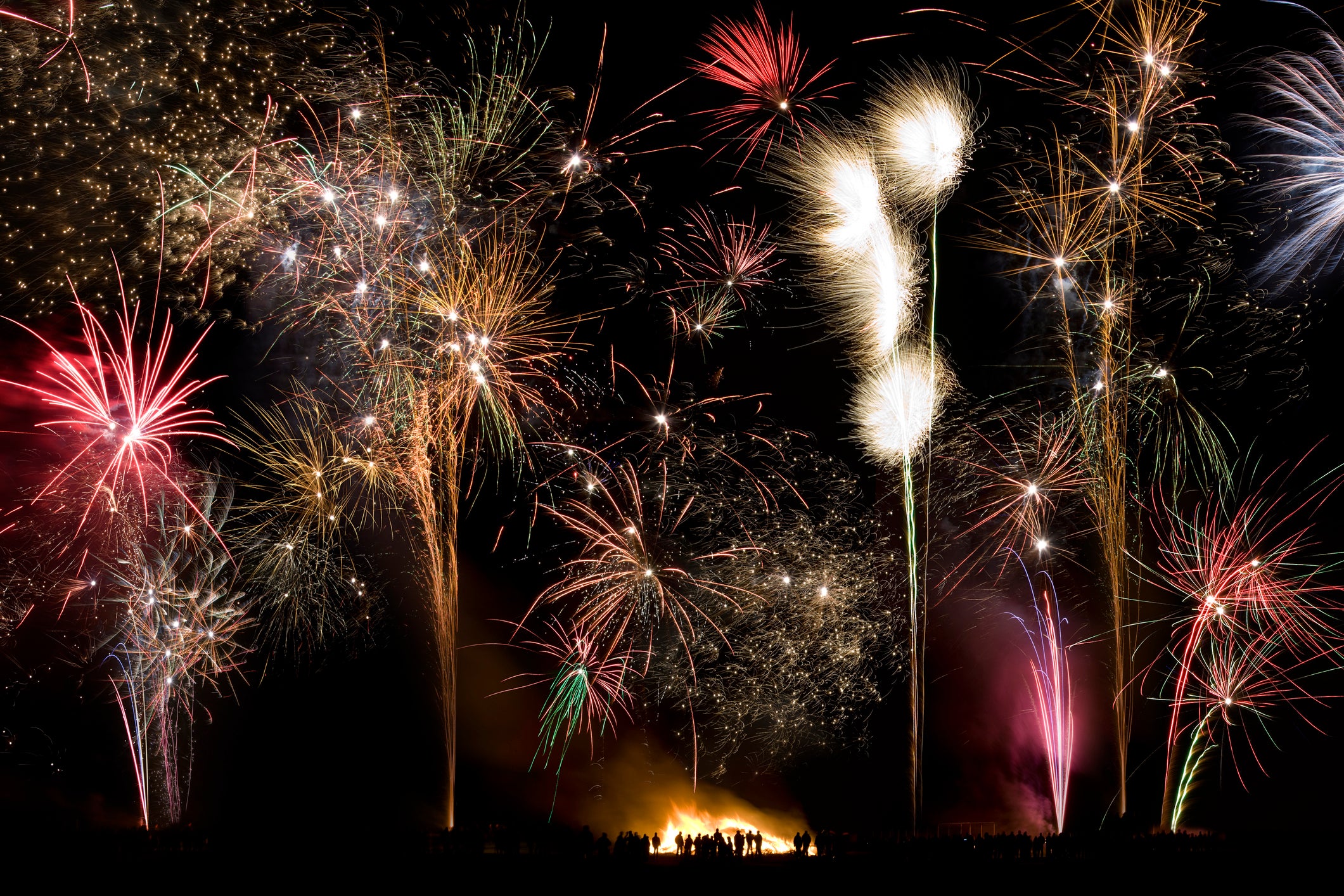How to have an eco-friendly Bonfire Night
The annual night of celebration can have a very detrimental impact on the environment

Your support helps us to tell the story
This election is still a dead heat, according to most polls. In a fight with such wafer-thin margins, we need reporters on the ground talking to the people Trump and Harris are courting. Your support allows us to keep sending journalists to the story.
The Independent is trusted by 27 million Americans from across the entire political spectrum every month. Unlike many other quality news outlets, we choose not to lock you out of our reporting and analysis with paywalls. But quality journalism must still be paid for.
Help us keep bring these critical stories to light. Your support makes all the difference.
Bonfire Night is coming back with a bang on Friday 5 November.
People are also able to let off rockets, light bonfires or burn straw replicas of Guy Fawkes in their own back gardens to celebrate.
But while the annual night of frivolity has been celebrated for centuries ever since Fawkes’ plot to blow up the House of Lords was foiled, it has been criticised on countless occasions due to the detrimental impact that it has on the environment.
This is because burning certain types of materials such as plastics, rubber and treated wood can not only harm the environment, but also the health of people in the vicinity.
Here’s how you can have an eco-friendly Bonfire Night, from burning natural materials to keeping your eyes peeled for any animals that could get in harm’s way.
Use natural materials
When preparing a bonfire, it can be all too easy to throw on any flammable material that you can find.
However, as the Environment Agency explains, doing so can have a tremendous effect on the quality of air in the country.
“Everyone must remember that it is illegal to burn most types of waste and setting fire to treated wood, tyres, plastics, rubber and oil can seriously harm health and pollute the environment,” the agency states.
“There are also fears that people will use Bonfire Night as an excuse to burn old furniture, mattresses or even household rubbish.”
Gas and electricity company Opus Energy recommends sourcing natural materials that won’t have as drastic an effect on the environment when burned.
“Try to only burn dry, clean and natural materials,” the company states. “These could be products such as untreated wood or waste from your own garden.
“Don’t burn any manmade materials such as plastics, oil, rubber, or anything with a chemical or plastic coating, as these all produce huge amounts of pollutants.”
Look out for animals
It’s also important to consider small mammals, such as hedgehogs and water voles, when lighting your bonfire and make sure you’re not putting any animals at risk.
As Green Impact Sheffield, an environmental organisation at the University of Sheffield, explains, hedgehogs may be concealed among garden foliage.
“With their natural ranges getting smaller and smaller, hedgehogs are increasingly moving into urban gardens,” the organisation states.
“Garden log piles are hog heaven, providing crucial shelter and food at a time when they’re preparing for hibernation.”
Green Impact Sheffield advises building your bonfire on the day that you intend to light it, in order to avoid accidentally trapping any animals among the timber.
Otherwise, arrange for your bonfire to be held in a location where there are fewer animals at risk.
Use eco-friendly fireworks
It wouldn’t be Bonfire Night without a magnificent display of fireworks.
However, all of those “Catherine wheels”, “Fountains” and “Rockets” that you’ll undoubtedly spy in the sky are causing a lot of pollution in the air, releasing harmful chemicals in the air that can remain for days.
While eco-friendly fireworks may be hard to find and can be expensive to purchase, if you’re fixed on using fireworks on Bonfire Night, then choosing certain types of fireworks over others could lessen the negative impact that you’re having on the environment.
“Generally, white-coloured fireworks will have fewer harmful chemicals than the most colourful versions and if you use more of the ground-based ones, like Catherine wheels, there's less chance of having debris that you can't find and dispose of safely,” explains energy company Ecotricity.
Watch out for the weather
The weather can make a massive difference to the extent to which the fumes emitted by bonfires and fireworks pollute the air.
That’s why checking the weather forecast in advance and choosing an evening for your bonfire accordingly could be a wise course of action.
“If the night air is still and misty, then the effects of pollution are intensified,” explains Green Redeem, a company that rewards people for living a more environmentally friendly lifestyle.
“Try to choose a night when the air is clear with a light breeze.
“Obviously, setting off fireworks or having a bonfire in a stiff wind is not to be recommended, no matter how much the children beg!”
Be wary of sky lanterns
Along with the bonfire and fireworks, many people also light sky lanterns on Bonfire Night.
As pretty as they may look in the night sky, they could pose a risk to animals when they eventually land.
“Although sky lanterns don’t need lots of nasty chemicals to launch, they pose a significant risk to wildlife. With no control over where they’re going, they can end up just about anywhere,” Ecotricity explains.
“The wire in the lanterns has been responsible for animals getting trapped and has even ended up in animal feed.
“They may be beautiful to look at but the risks far outweigh the benefits.”
Several retailers, including skylanternsonline.co.uk, sell biodegradable sky lanterns that are made without any wire.


Join our commenting forum
Join thought-provoking conversations, follow other Independent readers and see their replies
Comments